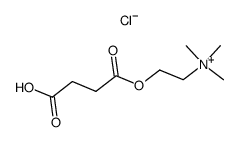Degradation and elimination of succinylcholine and succinylmonocholine and definition of their respective detection windows in blood and urine for forensic purposes.
Uta Kuepper, Frank Herbstreit, Jürgen Peters, Burkhard Madea, Frank Musshoff
文献索引:Int. J. Legal Med. 126(2) , 259-69, (2012)
全文:HTML全文
摘要
The muscle relaxant succinylcholine (SUX) evokes respiratory paralysis, and numerous cases of fatal SUX intoxication have been reported. Detection of SUX and its metabolite succinylmonocholine (SMC) is difficult, both due to their (bis-) quaternary structure and the extreme hydrolytic susceptibility of SUX, and data on degradation kinetics of SUX and SMC is scarce. The present study investigates the in vivo and in vitro degradation as well as elimination of both target analytes using authentic blood and urine samples from anesthetized patients. With a special focus on the urinary data and stabilization issues, this work intends to considerably enhance the forensic knowledge concerning SUX intoxications and to present the reader with practical analytical strategies to cope with such difficult cases. Eighteen subjects undergoing surgery and requiring arterial as well as bladder catheters were included in this study. Muscle relaxation was initialized with a bolus injection of 80-100 mg SUX. Blood and urine samples were either collected using paraoxonized (n = 15) or non-modified (n = 3) tubes. Sampling was performed within 6 h after SUX application following a pre-assigned schedule. Samples were processed according to a validated isotope dilution HPLC-MS/MS method using ion-pair solid-phase extraction. In blood, SUX was usually detectable for up to 10 min post-injection, while detection of SMC was possible over the whole observation period of 6 h. Effectiveness of organophosphate stabilization was proven for both analytes and is therefore recommended. In freshly secreted urine, detection windows of a minimum of 2 h as opposed to 6 h have been determined for SUX versus SMC, respectively. Considering SMC plasma kinetics, detection of the metabolite in blood and freshly secreted urine appears to be possible over a period of at least 8-24 h. Paraoxon did not enhance the stability of either target substance in urine, stabilization of urine samples is nonetheless recommended. In summary, SMC was proven to be the most promising target analyte in SUX analysis, with urine being the proposed matrix of choice for forensic applications. Furthermore, our work defines meaningful detection windows for SUX and SMC in blood and urine as routine matrices and presents sampling recommendations as well as guideline values for forensic toxicological analysis.
相关化合物
| 结构式 | 名称/CAS号 | 分子式 | 全部文献 |
|---|---|---|---|
 |
2-((3-羧基丙酰基)氧基)-N,N,N-三甲基乙胺氯化物
CAS:5297-17-6 |
C9H18ClNO4 |
|
Chronotropic effects of succinylcholine and succinylmonochol...
1982-10-01 [Anesthesiology 57(4) , 289-92, (1982)] |
|
A fully validated isotope dilution HPLC-MS/MS method for the...
2008-10-01 [J. Mass Spectrom. 43(10) , 1344-52, (2008)] |
|
Succinylmonocholine analytics as an example for selectivity ...
2008-06-01 [Rapid Commun. Mass Spectrom. 22(12) , 1965-70, (2008)] |
|
Pharmacokinetic properties of succinylmonocholine in surgica...
2011-06-01 [J. Anal. Toxicol. 35(5) , 302-11, (2011)] |
|
Applicability of succinylmonocholine as a marker for succiny...
2011-04-15 [Forensic Sci. Int. 207(1-3) , 84-90, (2011)] |